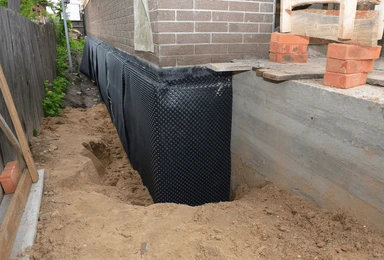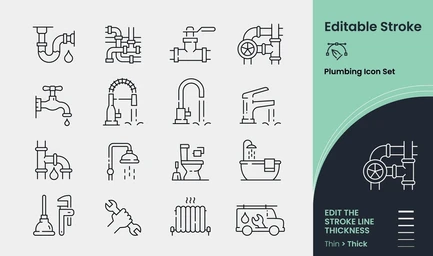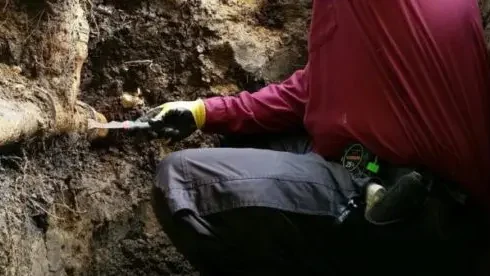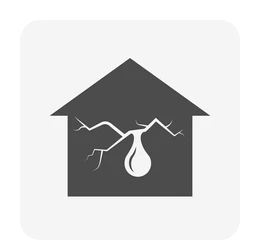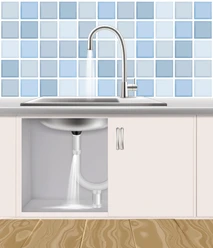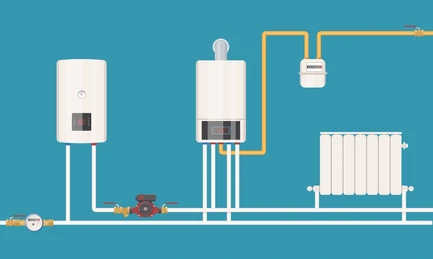Know This Before Paying For A Foundation Repair
Addressing foundation problems can come with a hefty price tag. Regrettably, foundation concerns are widespread in North Texas. A majority of homes constructed in the region just north of Dallas are situated on a concrete slab foundation. Moreover, the soil in many of these locations is prone to instability. If the land was not adequately prepped before construction, it may result in foundation troubles down the line, long after the house was If your slab home requires foundation repair, it’s essential to understand the potential impact on the plumbing systems located beneath the slab. Being informed about this critical aspect will enable you to make informed decisions, prioritize tasks effectively, and avoid unexpected complications throughout the process. This article provides a concise overview of the foundation repair process, explores the implications for plumbing systems, and explains the necessary water and sewer tests to be conducted before and after the repair. An Overview of the Foundation Repair Process While foundation repair projects differ in requirements, there are typically consistent steps that are adhered to during the process. Staging the Job At times, various services may need to be turned off before starting the project. A reputable company will make a concerted effort to complete their tasks with precision and ensure that everything can be reassembled neatly afterward. Using tarps and relocating plants may also be required Installing the Piers To ensure the slab has a strong base to bear its weight it is essential to install piers (constructed from steel or concrete) by excavating under the edges or within the house. For interior piers, a hole can be chipped in the concrete for excavation. Reinstalling carpet over excavated interior piers is relatively simple. However, if the piers must be placed under tiled or wooden flooring, it may be required to engage a separate contractor to repair the flooring correctly. Once the piers are installed, they provide solid points underneath the slab that can be used to first lift and then support the slab at the proper elevation. They use very powerful hydraulic jacks to slowly lift the slab until it is at the right height everywhere. Once it is level and everything is back to where it should be, the jacks are removed and now the slab is permanently resting on the piers.|Lifting the Concrete Slab Filling in the Holes With the foundation repair complete, the next step is to refill the holes created by the pier installation. The previously excavated soil is carefully packed back into the holes, although it’s not possible to achieve 100% compaction. As a result, some excess soil may remain, which is typically piled up near the holes or along the foundation perimeter, where it can settle and compact over time. Finishing Touches A reputable foundation contractor will meticulously restore your property to its original state after completing the project. This includes re-establishing landscaping, grading the soil to a smooth finish, and thoroughly cleaning the interior of your home if internal piers were installed. However, any additional work, such as installing new flooring or advanced landscaping features, will typically require the services of a separate contractor. That concludes the discussion on the foundation company’s perspective. However, we are not finished yet. Up next, we will explore the impact of this activity on the plumbing system. Foundation Movement and Plumbing Systems Having water underneath the foundation poses a challenge. It is essential to construct residential areas with effective water management systems such as gutters and French drains to prevent excessive moisture from accumulating in the soil beneath the structure. When water does seep under the foundation, the soil expands, exerting enough pressure to shift the foundation. Similarly, when the soil dries out, it contracts, causing any objects placed on top to sink along with it. Understanding this concept highlights the significance of ensuring there are no plumbing leaks beneath. A leak in the home’s clean system could swiftly lead to a significant amount of water accumulating under the foundation. Conversely, slow leaks in the sewage pipes can cause substantial damage over a prolonged period. The pipes are placed below the foundation and covered with soil before pouring them. They rise and go through the concrete wherever a plumbing fixture is located. Essentially, some parts of the plumbing network are anchored in the ground beneath the building while others are secured by the concrete base. Movement of the slab compared to the soil can exert significant pressure, potentially causing damage to the pipes. chrome air conditioning Plumbing Services Sometimes, water leaks from the plumbing can lead to the shifting of the foundation due to the overflow. As a result, this movement of the foundation can trigger additional pipe damage, continuing the cycle of plumbing problems. |Often, the situation is not as dramatic. The base may have moved slightly due to natura soil shifts, but the plumbing remains undisturbed. As long as the lifting work is not too extensive, the plumbing should remain in good condition during the foundation repairs. Water and Sewer Static Testing Underneath the house, there are two distinct plumbing networks: the pressurized system that supplies clean drinking water and the gravity-fed system that handles wastewater disposal. These two systems require different testing methods, known as “static tests”, to ensure their proper functioning. Water Static Test To conduct a water static test, a pressure gauge is attached to the system to determine the existing water pressure in the pipes. Next, the main water supply valve, typically located at the meter, is closed to isolate the system, such as faulty pipes, dripping faucets, or constantly running toilets, will cause the water pressure to decrease. The rate of pressure drop is directly related to the severity of the leak, with a faster drop indicating a more significant issue. To rule out any potential issues, we’ll need to inspect the above-ground fixtures, such as faucets, to ensure there are no visible leaks. Although these leaks won’t directly impact the foundation, they can mask other, more

